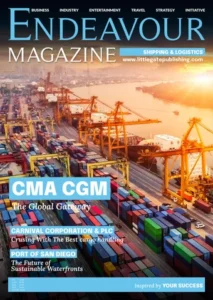Investment casting is one of the most versatile and precise manufacturing processes available for producing complex metal parts. Known since ancient times as lost-wax casting, the process has evolved into a modern industrial process with application in a number of fields. It’s pretty important for any engineer, product designer, or simply for anyone interested in knowing how manufacturing processes work. Now you will learn about the process of investment casting, its applications, advantages, and limitations. By the end of it, you would understand this extraordinary manufacturing technique pretty well and appreciate its position in the contemporary industry world.
What is Investment Casting?
Investment casting, known elsewhere as lost-wax casting, is a high-precision manufacturing process for complex-shaped metal parts that virtually have an accurate surface finish. This ancient technique has been around thousands of years. It has evolved to be a very complex industrial method used in various sectors – even in the aerospace and medical fields.
The Process
This investment casting starts with a wax pattern that exactly reproduces the final object. The pattern is then layered in a ceramic material to achieve a mold. Upon hardening, this wax pattern is melted away, leaving a hollow cavity. Hot metal is poured into this mold to fill every detail it holds. Once cooled and solidified, the ceramic shell is broken away to expose the cast metal part.
Advantages
The advantages of investment casting are as follows:
- Production is possible of complex shapes within close tolerances
- Excellent surface finish, reducing the amount of secondary machining required
- A wide range of alloys can be used with the facility of producing large parts.
- Low cost for large production runs
This process, with its precision and versatility, is one of the precious processes in the modern manufacturing world. Components that might be difficult or even impossible to produce using other techniques are possible with this process.
Investment Casting Process Explained
Investment casting, also known as lost-wax casting, is an advanced manufacturing technique that produces very accurate metal parts. The process basically entails the following steps:
Preparation of the Pattern
This step is followed by the building of a wax pattern. In investment casting, a wax pattern is a precise model of the actual product to be produced. Patterns are generally built and combined to form a tree structure over a central wax sprue.
Formation of the Mould
The wax pattern is then dipped time and again in a ceramic slurry, coated with fine sand or stucco, so that a shell is created on the wax side, allowing it to harden. The process is done a number of times in order to create a hard shell.
Once the ceramic shell is prepared, it is kept in a furnace. Melted wax is drained out, leaving an empty cavity in the shape of the part to be reproduced. Molten metal is then poured into this cavity, filling the minute details of the mold.
Benefits of Investment Casting to Manufacturers
Investment casting has so many advantages over manufacturers in various sectors. There are quite a number of benefits through this versatile process, offering a great increase in efficiency as well as quality in the manufacture of products.
Design Flexibility on Par with Exemplars
Investment casting accommodates an intricate and complex form and shape that can not easily or even be produced through the use of other manufacturing means. This flexibility allows for part geometry optimization with the goal in mind to obtain reduced weight and materials along with strength.
Better Surface Finishes and Dimensional Capabilities
A high surface finish is often achieved in the production of parts without requiring subsequent casting machining. Investment castings can be held to very close tolerances and may be held within ±0.005 inches for the first inch, then ±0.002 inches for additional inches. Therefore, substantial savings in secondary operations for time and expense are possible.
Economical in small to medium volume production
Although the initial tooling is higher, investment casting becomes less expensive when compared to higher production runs. The fact that it is possible to cast several parts in one operation and require less machining further contributes to savings, particularly with complex components.
Conclusion
In conclusion, investment casting offers unparalleled precision and versatility when it comes to producing complex metal parts. You can then understand the step-by-step process, key advantages, and potential challenges of using this process for your manufacturing needs. You should not forget to take into consideration material selection, design optimization, and post-casting treatments that can maximize the benefits derived from investment casting. With advances in technology, it remains at the top for modern manufacturing. This possibility opens up opportunities for industries ranging from aerospace to medical devices, all aiming to realize intricate components. Mastering the subtleties of investment casting will definitely improve the ability of a design engineer or procurement specialist to produce high-quality and cost-effective solutions.






